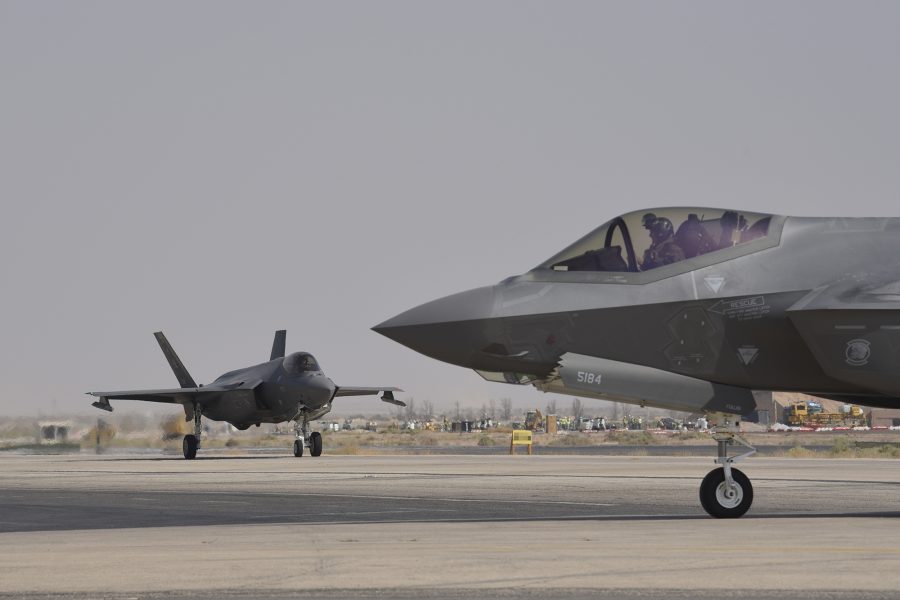Airmen and F-35s deployed to the Middle East from Hill Air Force Base, Utah, increased the jet’s mission-capable rate during combat operations while helping guide the future of the jet’s complex maintenance logistics system.
F-35s from Hill’s 4th Fighter Squadron deployed to Al Dhafra Air Base, United Arab Emirates, for six months last year. The jets almost instantly began conducting airstrikes while 70 percent of the fleet was able to conduct its mission, said Brig. Gen. David Abba, director of the Air Force’s F-35 Integration Office. By the end of the deployment, that rate had climbed to more than 90 percent.
The jets flew 1,300 combat sorties over about 7,300 combat hours, and employed about 150 weapons. All bombs worked as planned without aircrew errors or weapon system malfunctions.
“The numbers are pretty remarkable,” Abba said.
The squadron was able to increase the mission-capable rate with a cadre of inexperienced maintainers. Hill AFB is has more than it needs of the most junior maintainers, so that those Airmen can spread across the operational units as they hone their skills, Abba said.
“They brought a truly representative set of maintainers that finished that deployment over 90 percent,” Abba said at a Mitchell Institute for Aerospace Studies event in Arlington, Va.
The 4th Fighter Squadron has been replaced in theater by the 34th Fighter Squadron, which “will not be the last” F-35A deployment to the region, Abba said. The 34th’s time in the region came amid heightened tensions surrounding Iran’s attack on Americans at bases in Iraq. In response to these attacks, F-35s “were ready to respond on a moment’s notice, should the order have been given for any additional missions to be executed,” he added.
Other notable missions during the deployment included flying alongside F-15Es and firing more than 40 tons of weapons at an island held by the Islamic State group in the Euphrates River. During another mission, two F-35As flying together sensed an advanced surface-to-air missile in the distance, geolocated it, and took a radar map of it for targetable coordinates, Abba said. While the F-35s didn’t bomb the SAM, the jets offered feedback to intelligence and command-and-control personnel, he said.
On the ground, maintainers working under pressure were able to keep the jets ready for flight, despite known problems with the aircraft’s Autonomic Logistics Information System. New logistics technology, called the Operational Data Integrated Network, will replace this system. ODIN, which is expected to be delivered later this year, is built using government and industry software expertise from groups such as the Air Force’s Kessel Run software coders, Hill’s 309th Software Engineering Group, and Lockheed Martin, among others.
Abba said ODIN is being developed to meet the needs of those using the F-35 in the fight. Maintainers have long complained that ALIS is slow, which can be problematic when deployed overseas.
“What we’re focused on is … minimizing touch points to do things like accelerate combat turn times, so that we can get the aircraft back into the fight faster,” Abba said. “We don’t want the IT system supporting the aircraft to be the long pole in the tent for combat sortie generation timelines.”
That turnaround is not as much of an issue in America’s wars in the Middle East because counterinsurgency operations unfold at a slower pace. In a future fight against a great power, for which the F-35 is designed, the Air Force knows it is going to have to move faster.
“We’re going to need to generate more sorties more rapidly, with quicker turns for the airplanes, and more sorties in a day for the aircraft than we’re seeing in the Central Command area of responsibility right now,” Abba said.
